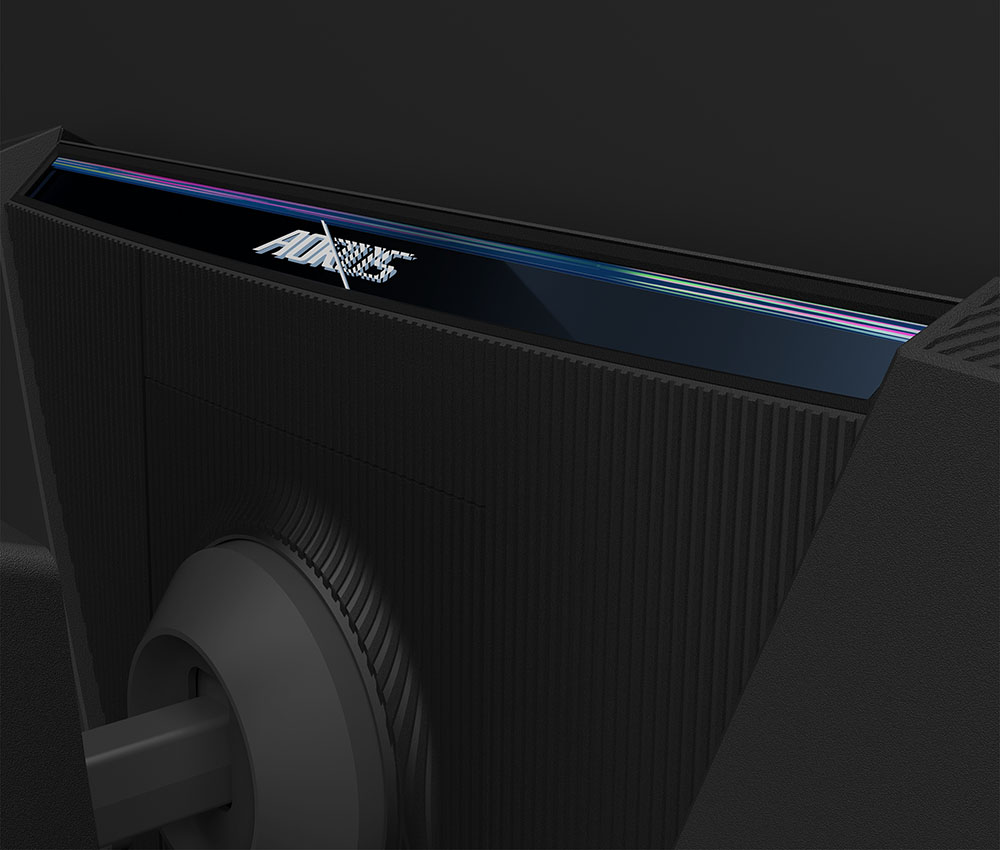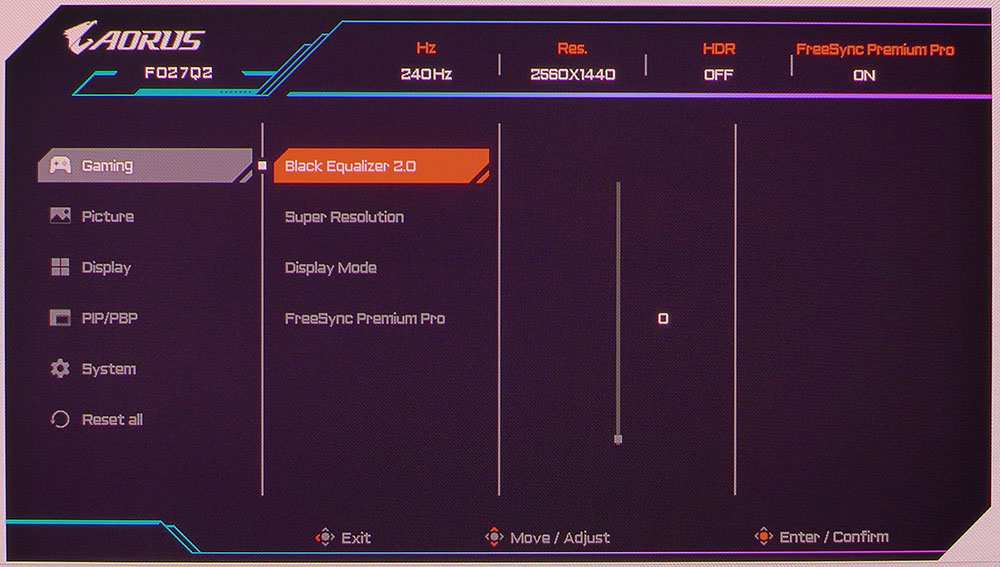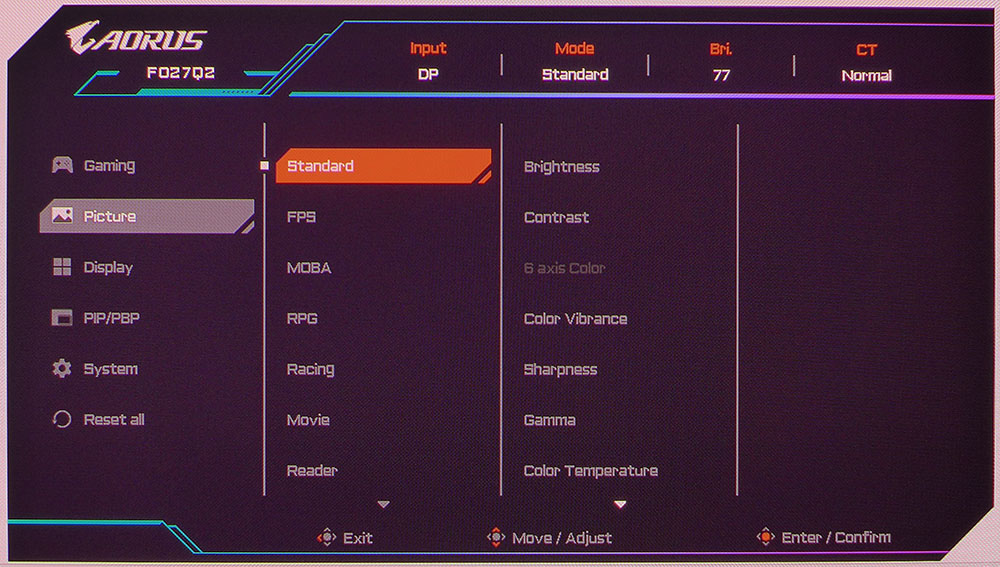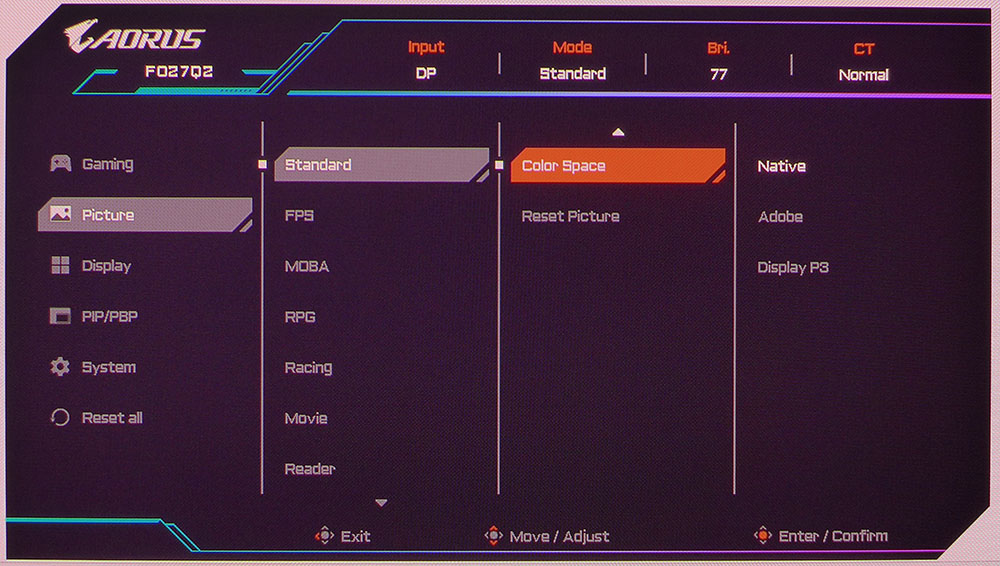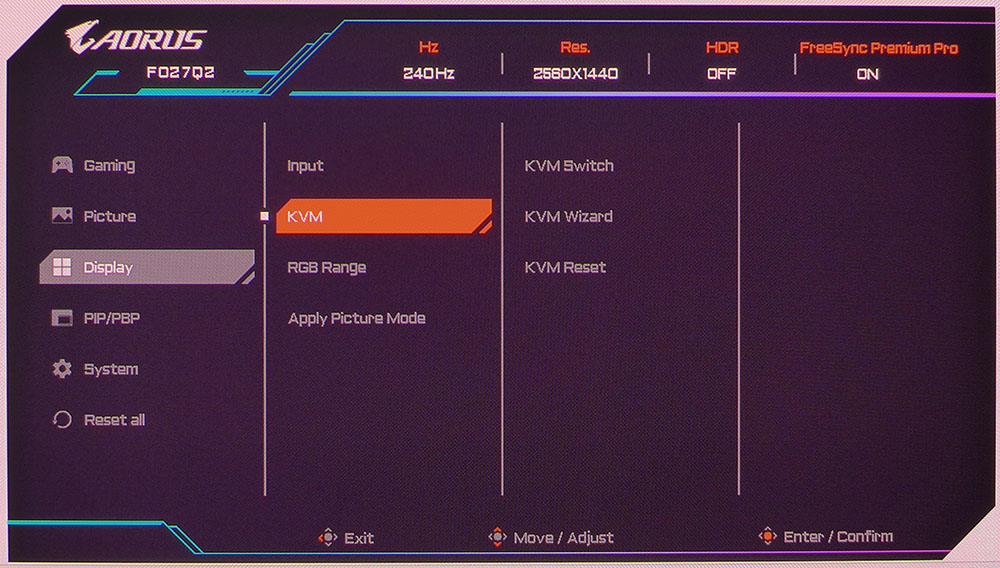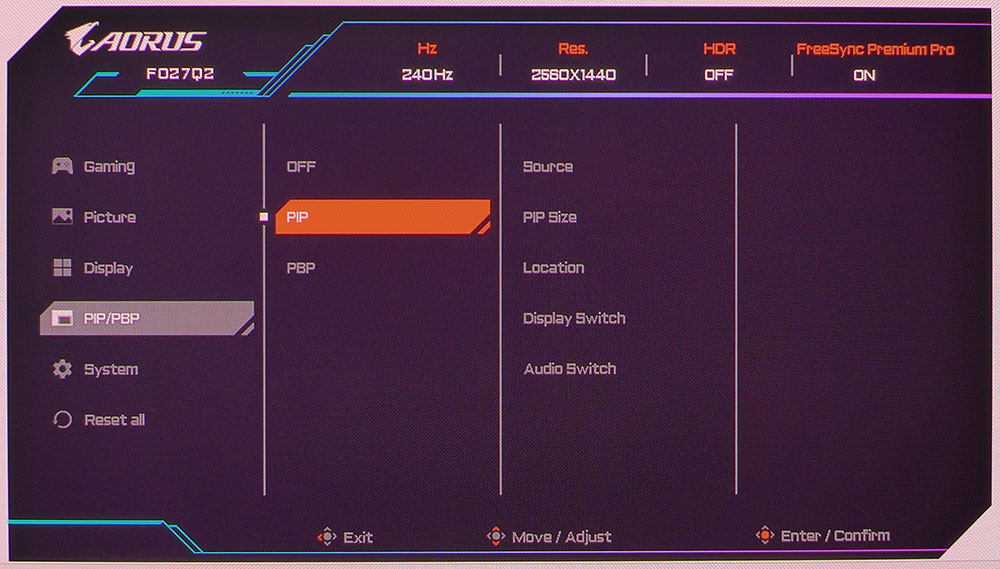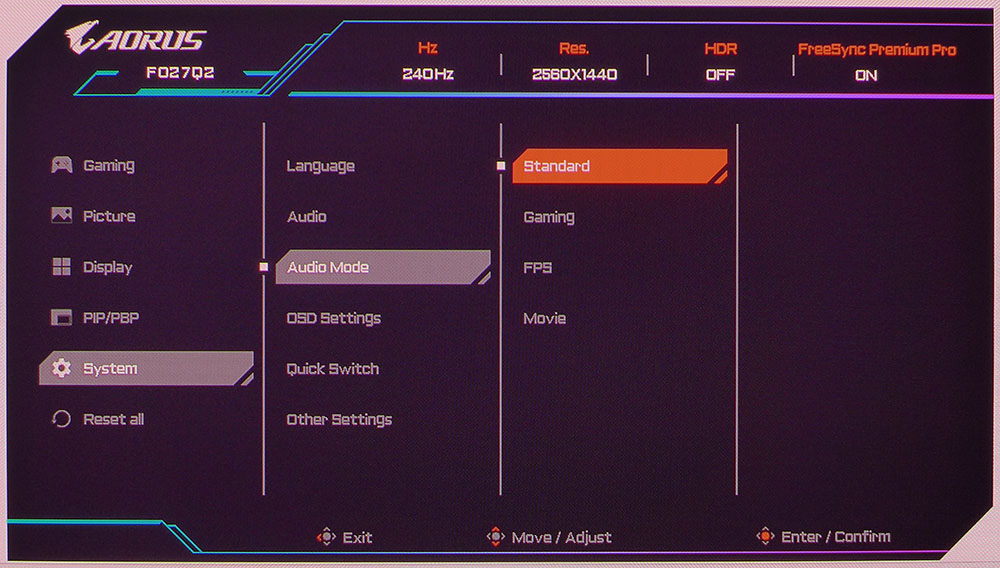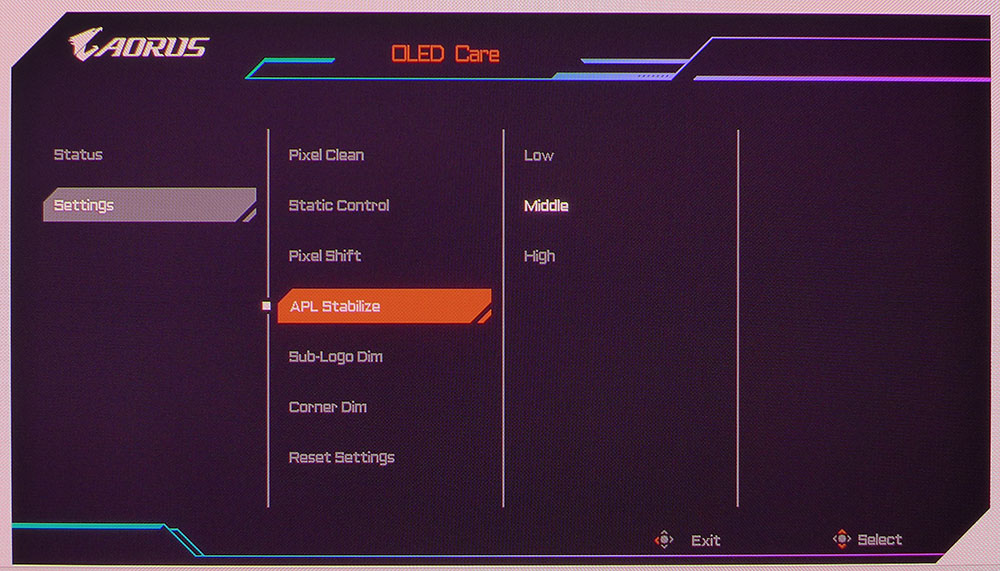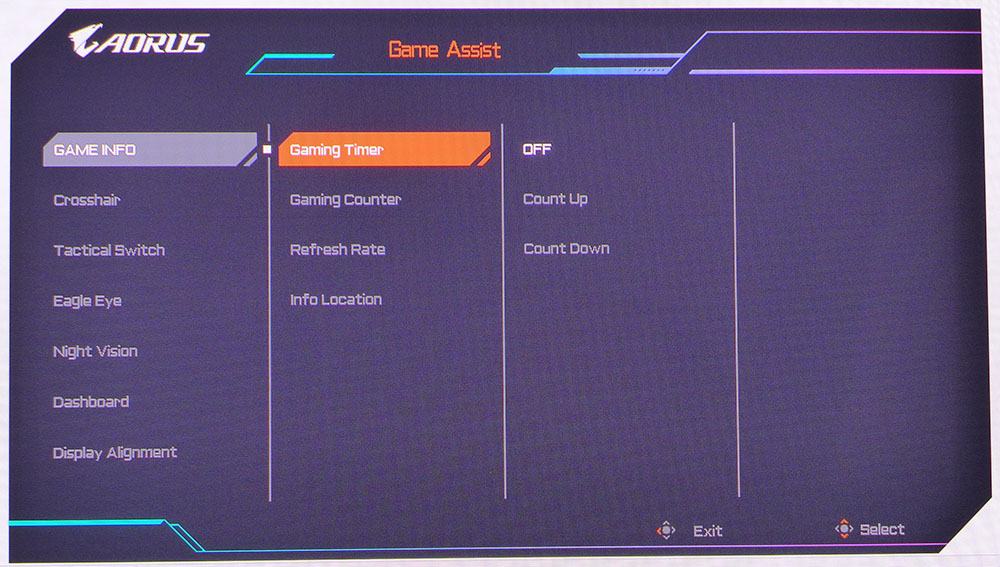I love reviewing OLED monitors for two simple reasons: stunning image quality and next-level gaming performance. Their self-emissive pixels, meaning each dot emits its own light, deliver perfect black levels and infinite contrast. At this point, it’s hard to imagine how a video image could look better when it comes to the best OLED gaming monitors.
The real game-changer, though, is their video processing. They refresh the screen so that there is no motion blur. A typical LCD will have some blur until you pass 300 Hz, and even then, it needs overdrive to achieve perfection. An OLED can render flawless motion resolution, where moving objects have the same clarity as static ones at around 150 Hz.
My current benchmark is the 240 Hz OLED category, and it is filled with mainly QHD 2560×1440 pixel panels in the 27-inch size. Price-wise, these are premium displays, but the numbers are slowly trickling downward. I’ll be looking at a new Aorus monitor here, the FO27Q2. It’s a 27-inch QHD 240 Hz screen with Adaptive-Sync, HDR400 and Quantum Dots for an extra wide color gamut. Let’s take a look.
Aorus FO27Q2 Specs
| Panel Type / Backlight | Quantum Dot Organic Light Emitting Diode (QD-OLED) |
| Screen Size / Aspect Ratio | 27 inches / 16:9 |
| Max Resolution and Refresh Rate | 2560×1440 @ 240 Hz |
| Row 3 – Cell 0 | FreeSync and G-Sync Compatible |
| Native Color Depth and Gamut | 10-bit / DCI-P3+ |
| Row 5 – Cell 0 | HDR10, DisplayHDR 400 |
| Response Time (GTG) | 0.03ms |
| Brightness (mfr) | 250 nits (full white field) |
| Row 8 – Cell 0 | 1,000 nits (3% window) |
| Contrast | Unmeasurable |
| Speakers | 2x 5w |
| Video Inputs | 1x DisplayPort 1.4 |
| Row 12 – Cell 0 | 2x HDMI 2.1, 1x USB-C |
| Audio | 3.5mm headphone output |
| Row 14 – Cell 0 | 3.5mm mic input |
| USB 3.2 | 1x up, 2x down |
| Power Consumption | 41w, brightness @ 200 nits |
| Panel Dimensions WxHxD w/base | 24 x 15.8-20.9 x 6.3 inches (610 x 401-531 x 159mm) |
| Panel Thickness | 2.2 inches (57mm) |
| Bezel Width | Top: 0.35 inch (9mm) |
| Row 20 – Cell 0 | Sides: 0.43 inch (11mm) |
| Row 21 – Cell 0 | Bottom: 0.67 inch (17mm) |
| Weight | 15 pounds (6.8kg) |
| Warranty | 3 years |
Another great thing about OLED panels is their consistency. I have yet to find one that isn’t exceptional. QHD 240 Hz screens like the FO27Q2 deliver the same gaming feel thanks to their blur-free motion processing. And they all have very wide color gamuts and the same infinite dynamic range. The differences come down to a few milliseconds of input lag and the feature set.
The FO27Q2 excels in all areas. It’s priced competitively at $650 at this writing, and a quick search reveals that its closest rivals also cost around $650. The main attraction, which you’ll soon see on page two, is its extremely low input lag. It set a record in my test, which is no small feat considering it beat monitors with higher refresh rates.
It also boasts a huge color gamut thanks to Quantum Dot tech. These microscopic dots are printed on a layer above the OLED emitters and expand the color gamut by around 12%. That’s a difference that can be seen in a side-by-side comparison. The FO27Q2 covered over 110% of DCI-P3 in my tests. That color is also extremely accurate. It measured so well in my tests that I didn’t bother with a calibration. It could easily serve as a professional display, and with many pro monitors costing thousands of dollars, you can save a lot of money, or buy more FO27Q2s.
The list of feature icons printed on the box is extensive. The FO27Q2 is VESA DisplayHDR 400 certified with 1,000-nit peaks possible in HDR mode. You get FreeSync and G-Sync, a 240 Hz refresh rate, five-watt internal speakers, audio modes, KVM function, PIP/PBP, OSD Sidekick control app and Aorus’ unique Game Assist men,u which contains a PC health dashboard to monitor fan speeds and chip temps.
The FO27Q2’s other unique feature is its resolution switch. It is not a change in refresh rate; there is no 480 Hz mode. But with one button, you can enable a 24-inch FHD or UHD screen. This allows for faster frame rates if you’re running a less-than-stout video card. It also widens compatibility with PC and console gaming systems so you can run an optimal resolution for every situation.
Clearly, there is little the FO27Q2 cannot do and the fact that it costs no more than its competitors is very attractive. Let’s get to the overview and testing.
Assembly and Accessories
The FO27Q2 comes packed in a graphically adorned box with its contents nestled in crumbly foam. The base and upright bolt together and the panel snaps in place. The package is premium with a high-end finish and feel. The cable bundle includes an external power brick plus USB, HDMI and DisplayPort cables. You also get a calibration data sheet specific to each sample.
Product 360
The FO27Q2 uses OLED technology to achieve an elegant aesthetic. From the front, all you see is screen with a thin flush bezel that is barely visible. A small Aorus logo sits on the bottom trim in black chrome. You can also see a small holographic badge at the base of the upright. It alternates between “Aorus” and a graphic, depending on how light strikes it. The screen cover is glossy so take care to avoid sunny windows or bright lamps.
The side view shows the super-thin panel attached to a component bulge. The screen backing is metal finished in a matte crackle. The bulge has a variety of textures, with vertical lines leading up to a shiny band that says Aorus and reflects the lettering in the full color spectrum. There is no LED lighting.
The stand is very solid with a very stable cast aluminum base. The upright is cut out in the middle so you can see the fulcrum moving up and down and there’s a small cable management clip at the bottom. Adjustments include 5.1 inches of height, 5/20 degrees tilt, 20 degrees swivel and a 90-degree portrait mode with smooth and firm movements throughout.
The input panel is up and under the center and features one DisplayPort 1.4, two HDMI 2.1, a USB-C that supports DP functions, and USB ports, one upstream and two down, version 3.2. They are supported by a KVM function in the OSD complete with a setup wizard. You also get 3.5mm headphone and 3.5mm microphone jacks. The internal speakers play with five watts of power each and deliver decent sound in the upper midrange frequencies without audible distortion. They can be tailored with sound modes in the OSD.
OSD Features
The FO27Q2’s OSD is controlled by a small joystick that sits under the center of the panel. One press summons a quick menu that offers Game Assist, OLED Care and full settings. There are also two buttons that can be programmed for different functions by the user.
The Gaming menu is minimal because an OLED like the FO27Q2 doesn’t need many video processing options. You can adjust shadow detail, add edge enhancement, change the aspect ratio and toggle Adaptive-Sync. The resolution shift is programmed to the button right of the joystick, and it cycles between FHD and QHD modes.
The picture menu has 10 picture modes, each with its own characteristics. Eco is the default, but if you want access to the FO27Q2’s full brightness capability, switch to Standard. Color is then perfect and does not need to be adjusted. If you need a smaller color space, you can select an equally accurate sRGB mode. A gamut option lets you choose Adobe RGB or Display P3 as well. If you want to tweak, color temp and gamma presets are available.
The KVM feature is powerful and easy to set up using the wizard. The idea is to have a single keyboard, monitor, and mouse that controls multiple video sources. This makes it easy to integrate computers, gaming consoles, and video players into the FO27Q2’s ecosystem. PIP and PBP functions are included too if you want to view two sources at once. The internal speakers are of decent quality and include four sound modes that sound subtly different from one another. The Quick Switch refers to the joystick and its directionals. Each one can be programmed for different functions like input or picture mode selection.
Most OLEDs have some sort of variable or constant brightness feature. Variable means you’ll see more pop as highlight areas will be driven more than shadows. Though OLED contrast is always infinite, this option makes the image livelier. The FO27Q2 calls this APL Stabilize and it has three levels. Low is equivalent to constant brightness. The overall light level is lower, but it doesn’t shift with content. High has a more dramatic effect. The OLED Care menu also has various panel-saving features like logo dim and pixel shift. An automatic refresh routine can be run when you’re not using the FO27Q2.
To access Game Assist, press the joystick and click right. There, you’ll find timers and stopwatches, frame counters, aiming points, sniper mode, night vision, and alignment marks for multi-screen setups. You can also turn on the dashboard, which displays fan speeds and temperatures for your CPU and GPU. The info appears in a small corner window.
Aorus FO27Q2 Calibration Settings
There isn’t much to tell here. Set your FO27Q2 to Standard mode and you’re pretty much done. The only decision left is peak brightness, and that setting will depend on your choice of APL Stabilize level. Low uses the least power but limits the peak to around 250 nits. High gives highlight areas more pop but you’ll have to lower brightness to keep the picture from being too bright. I’ve provided two sets of numbers below. Leave the gamma at 2.2 and the color temperature at normal for the most accurate color, grayscale, and gamma tracking. The native gamut covers over 110% of DCI-P3 so if you want to dial it back, there’s a gamut option for Display P3, or you can choose the sRGB picture mode. HDR content switches the FO27Q2 automatically where there are four more presets. Stick with HDR for the best and most accurate image.
| Picture Mode | Standard |
| APL Stabilize | Low / High |
| Brightness 200 nits | 77 / 40 |
| Brightness 120 nits | 42 / 19 |
| Brightness 100 nits | 34 / 15 |
| Brightness 80 nits | 26 / 10 |
| Brightness 50 nits | 13 / 3 (min. 21 or 28 nits) |
| Contrast | 50 |
| Gamma | 2.2 |
| Color Temp | Normal |
Gaming and Hands-on
After setting up the FO27Q2, my first task was to play a few games to get a feel for its video processing. Of course, I had already done the tests so I knew it would be special, and it did not disappoint. Though it’s hard to perceive a difference in feel and response between 240 Hz QHD OLEDs, the FO27Q2 had just a hair more precision. That was evident in how quickly I worked through familiar maps in Doom Eternal’s Horde mode. My aim was spot on over multiple gaming sessions, so I know it wasn’t a fluke. This monitor is a precision tool and will enhance a gamer’s experience no matter what their skill level.
I was able to drive the FO27Q2 at 240 fps without difficulty. If you can keep speeds above 150, there won’t be any motion blur. And at 120 Hz, I saw barely any. Control response is incredible, but you can buy nearly any OLED and experience that. The FO27Q2 is the best choice for those with the quickest possible gaming screen. Currently, there are none quicker.
The picture was stunning in both SDR and HDR modes. The FO27Q2 is at its best in HDR content with APL Stabilize set to High, which delivers the brightest highlights and the most punch. Setting it on Low dulls the picture a bit unless you play in a darkened room, in which case it’s the right choice. The color was stunning no matter what the setting. Quantum Dots are truly worthwhile, and I wouldn’t buy an OLED without them. They’re well worth the extra coin.
The FO27Q2’s flat 27-inch panel is ideal for productivity. Its QHD resolution is enough for a 109ppi pixel density, which is high enough to hide the dot structure at close viewing distances. OLED contrast ensures that fine detail is clear and, in many cases, textural.
Physically, the FO27Q2 is a conversation piece. Though its styling isn’t garish, it stands out in a crowd. The thin panel and component bulge are an OLED trademark that many users will recognize. Though there aren’t LED lights, the holographic elements on the base and back add just enough bling. The stand is top quality with firm smooth adjustments and a rugged feel. You’ll be using the FO27Q2 for the long haul.
Takeaway: The FO27Q2 is one of those monitors that does everything well. It’s equally suited for work or entertainment with an efficient form factor and no-nonsense operation. Gaming performance is beyond impressive, even among other OLEDs thanks to ridiculously low input lag. With the lowest value I’ve ever measured, it can even beat the current crop of 480 Hz QHD screens. Honestly, there is nothing wrong with this monitor. It’s as close to perfect as I can imagine.
MORE: Best Gaming Monitors
MORE: How We Test PC Monitors
MORE: How to Buy a PC Monitor
MORE: How to Choose the Best HDR Monitor






